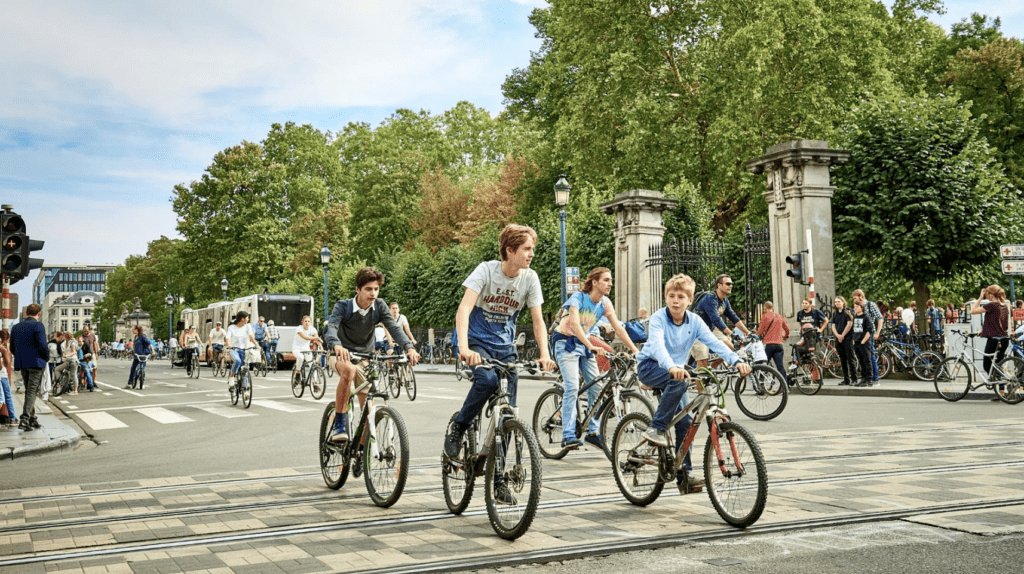The European Union has tripled the amount of spending on cycling and walking projects in recent years; this amount is only expected to grow with the launch of the European Green Deal and a rise in the popularity of bicycle transportation since the start of the pandemic.
Between 2007 and 2013, the EU spent €700 million for bike and pedestrian initiatives – that figure rose to €2 billion in the period 2014-2020, according to the European Cyclists’ Federation (ECF).
“As the experiences of many European regions show, the implementation of ambitious cycling policies is one of the best responses to the twin challenges of climate change and public health that the world is currently facing,” the ECF said in a statement.
“More people cycling means lower greenhouse gas emissions, lower noise levels and better air quality, as well as greater physical activity for citizens and hence much better personal and public health.”
Flanders leading the way
The ECF recently published an “Integrated Cycling Planning Guide” aimed at helping cities and municipalities invest in better cycling infrastructure, addressing relevant regulations and explaining how to propose projects.
Included in the guide are examples of successful projects carried out in Belgium – Leuven in particular – which serve as examples of good practices.
“The traffic circulation plan introduced in Leuven in 2016 increased cycling volumes by 32% in one year thanks to eliminating through car traffic from the city centre,” the ECF found.
Still, they said that it isn’t simply a question of “building a ring road around a city, it is also necessary to change the traffic organisation inside of it.”
Lueven did this by completely reorganising the traffic patterns in its city centre: “The possibility of driving a car directly between sectors was removed by closing short sections of street to motorised traffic entirely [and] introducing one-way flow for car traffic on selected sections of streets, with contraflow traffic permitted for cyclists and sometimes also busses.”
Related News
- Hidden Belgium: One of the longest cycle trails in Europe
- New 425-km mountain bike route opened along Belgian coast
- 'Cheap and fast': Brussels doubles budget for social bicycle leasing
The changes saw bicycle traffic on weekdays in the city centre go up by 44% and bus ridership by 18%; car traffic decreased by 19%.
“Air quality improved already in the first year after the change,” the ECF reports. “In some places, the concentration of black carbon fell as much as 2.5 times.”
The most extensive cycle highway network in the EU is currently under development in Flanders, where 110 planned routes will form a network of 2,400 kilometres. Of the 110 routes, 61 are already in use, according to the ECF.

Bicycles parked in Antwerp. Photo by Helen Lyons/ The Brussels Times
Work still to be done in Belgium
Despite being widely referred to as "the home of cycling", the ECF says that there is room for improvement when it comes to Belgium’s approach to cycling.
“Progress has been limited in reducing congestion and promoting more sustainable modes of transport,” they said.
While some progress has been made on investment-related economic policy on sustainable transport in both Flanders and Wallonia – including a €600 million investment to improve Flemish traffic flows, “Belgium still scores poorly in terms of road infrastructure.”
“To foster the economic recovery, it will be important to front-load mature public investment projects and promote private investment, including through relevant reforms, which would also help the industrial transition.”
Their final recommendation is for the country to “focus investment on the green and digital transition, in particular on infrastructure for sustainable transport.”

